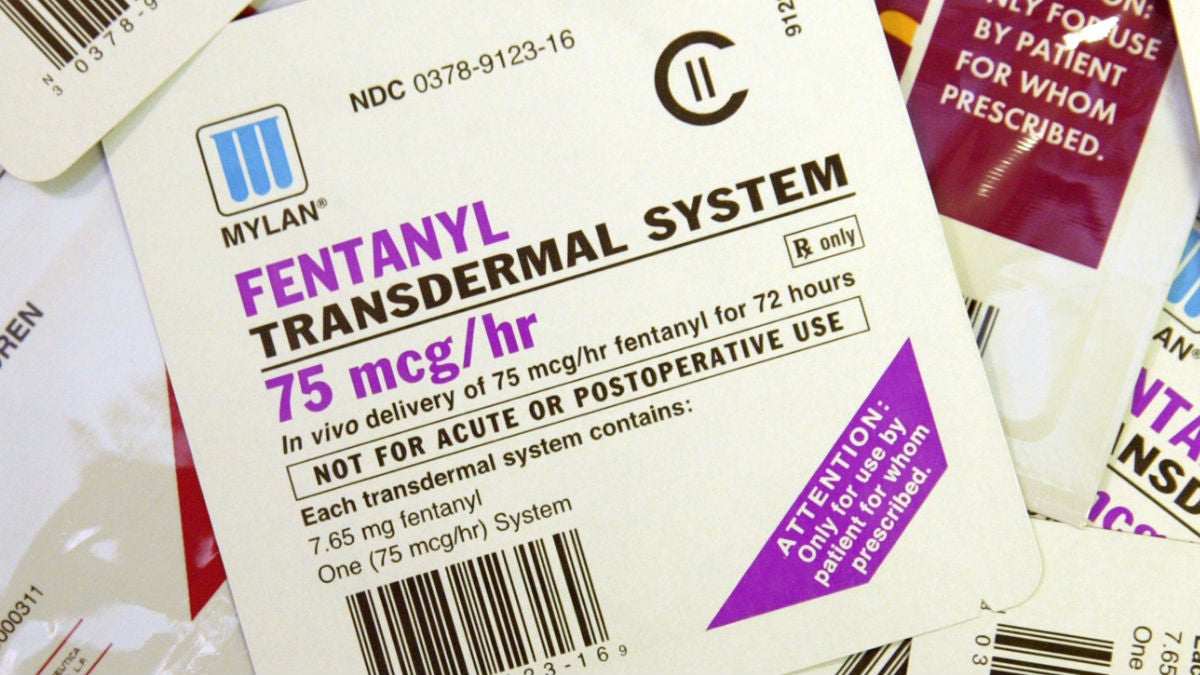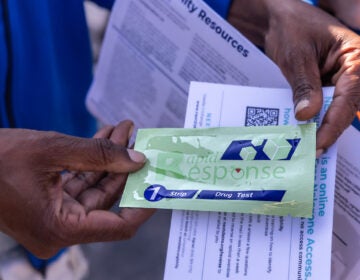Major jump in Delaware fentanyl overdose deaths

(AP Photo/Tom Gannam)
Fentanyl-related deaths more than doubled in Delaware just through September. DHSS Secretary Rita Landgraf calls the deaths “heartbreaking.”
Through September, 90 Delawareans have died from overdoses involving fentanyl. That’s more than double the 42 people that died from fentanyl-related overdoses in 2915. Fentanyl is a synthetic painkiller that is up to 50 times more potent then heroin.
“The dramatic increase in overdose deaths related to fentanyl is heartbreaking,” said Delaware Department of Health and Social Services Secretary Rita Landgraf. “We urge people to seek treatment for addiction rather than face an increasing risk of death from an overdose of fentanyl, heroin, cocaine, or some combination of drugs.”
While state health leaders have recognized the opiate epidemic as long ago as 2009, even they were taken aback by the huge jump in fentanyl-related deaths over the past two years. In 2012, there were 15 fentanyl deaths in Delaware. That number increased by 180 percent to 42 deaths in 2015. This year’s 90 deaths- so far- represent a 114 percent increase over 2015.
“The increase in deaths from fentanyl over the last two years is extremely alarming,” said Dr. Karyl Rattay, director of the Delaware Division of Public Health. “Last year, we were very alarmed, very concerned when we had 42 individuals in Delaware die from overdoses that included fentanyl, and already by the end of September, we were at 90 here in Delaware.”
Every part of the state is impacted by these overdose deaths. So far this year, 45 OD deaths have been reported in New Castle County, 30 in Sussex County, and 15 in Kent County. Overdose cases have been predominantly among white men, who made up 84 percent of the OD deaths. More than 60 percent were between the ages of 20 and 39, while 19 percent were in the 40’s and 15 were in their 50’s.
Delaware law enforcement agencies have increasingly been arming officers with Naloxone, medication which can reverse the symptoms of an overdose. That effort likely has kept the overdose death number from being even higher. “We’re getting reports all the time about reversals that [police] are making, EMS on a regular basis, even more so,” said Dr. Rattay. Through June 2016, paramedics or police officers in Delaware have administered Naloxone 1,070 times in suspected overdose cases.
In response to the dramatic increase, the state will continue to push for treatment for addicts. “Recovery is possible for people. Treatment works,” Rattay said. “There are treatment programs out there that can help people safely recover from opiate addiction.”
The state has also made it easier for those in the company of overdose victims to call for help. In 2013, the state’s 911/Good Samaritan Law gave legal immunity to those calling to get help for an overdose victims. Under the law, people reporting an overdose cannot be prosecuted for low-level drug crimes. “When an overdose occurs, time is of the essence,” said David Humes, board member with the atTAcK addiction group. Humes’ son died following a 2012 overdose in Pennsylvania.
Opiate abuse and fentanyl-related overdose has been a growing regional problem too. While the U.S. average rate of OD deaths is 14.7 per 100,000, Delaware (20.9), Maryland (17.4) and Pennsylvania (21.9) were all above that rate. New Jersey’s OD death rate was right in line with the national average at 14 deaths per 100,000.
“Sadly, the Delaware Valley has long suffered from episodes of overdoses due to heroin and prescription opiates, but never at the rate we see occurring now,” said Jeremiah Daley, director of the Philadelphia-Camden High Intensity Drug Trafficking Area, which includes New Castle County. “The introduction of fentanyl, fentanyl analogues or other synthetic opioids into the illegal drug marketplace greatly increases the risk of an overdose episode and death.”
Because those substances can also be accidentally absorbed through the skin, inhaled, or ingested, they also present a greater risk to those who may unknowingly come in contact, including first responders and caregivers of users.
WHYY is your source for fact-based, in-depth journalism and information. As a nonprofit organization, we rely on financial support from readers like you. Please give today.





